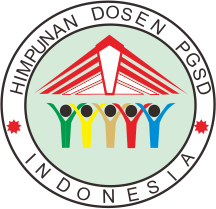Implementation of Tri Hita Karana-Based Education in Protecting the Environment in Schools
DOI:
https://doi.org/10.30595/dinamika.v17i1.25112Keywords:
Implementation, THK, Pawongan, Palemahan, Parahyangan, CARAbstract
This study aims to explore the implementation of Tri Hita Karana-based education in protecting the environment in Elementary Schools. Conducted at SDS Methodist 10 Belawan, this study involved 35 students in grades IV and V as samples. The method used was classroom action research with a cycle approach, consisting of planning, implementation, observation, and reflection. In each cycle, pre-tests and post-tests were conducted to measure students' understanding of the Tri Hita Karana concept. The results showed that the implementation of this approach succeeded in increasing students' environmental awareness. In the first cycle, only 9% of students reached the "Good" category, while in the third cycle, although this percentage remained, there was a significant decrease in the "Poor" category. An in-depth discussion revealed that the values of Tri Hita Karana, which include a harmonious relationship between humans, God, and the environment, not only increase students' awareness of the importance of protecting the environment but also encourage collaboration in cleaning and greening activities. Although the results of the pre-test and post-test showed progress, challenges remain, especially in increasing the proportion of students in the "Good" category. This study concludes that Tri Hita Karana-based education is effective in forming environmentally conscious characters in students. Sustainable strategies are needed to ensure the active participation of students in preserving the environment in schools, as well as further development of this approach in other educational contexts.
References
[1] N. P. M. Rusdiana and I. G. A. A. Wulandari, “E-Book Interaktif Materi Siklus Air pada Pembelajaran IPA untuk Meningkatkan Hasil Belajar Siswa Kelas V Sekolah Dasar,” Mimb. PGSD Undiksha, vol. 10, no. 1, pp. 54–63, 2022.
[2] J. Siskayanti and I. Chastanti, “Analisis karakter peduli lingkungan pada siswa sekolah dasar,” J. Basicedu, vol. 6, no. 2, pp. 1508–1516, 2022.
[3] M. B. A. Sya’ban, “Tinjauan mata pelajaran IPS SMP pada penerapan pendidikan lingkungan hidup untuk peduli akan tanggung jawab lingkungan,” J. Geogr. Edukasi Dan Lingkung., vol. 2, no. 01, pp. 32–44, 2018.
[4] I. M. PURANA, “Pelaksanaan tri hita karana dalam kehidupan umat hindu,” Widya Accarya, vol. 5, no. 1, 2016.
[5] I. W. P. Yasa, “Tri Hita Karana untuk Pencegahan COVID-19 di Bali,” J. Socius J. Sociol. Res. Educ., vol. 7, no. 1, pp. 54–66, 2020.
[6] L. Lilik and I. K. Mertayasa, “Esensi Tri Hita Karana Perspektif Pendidikan Agama Hindu,” Bawi Ayah J. Pendidik. Agama Dan Budaya Hindu, vol. 10, no. 2, pp. 60–80, 2019.
[7] I. W. Padet and I. B. W. Krishna, “Falsafah hidup dalam konsep kosmologi Tri Hita Karana,” Genta Hredaya Media Inf. Ilm. Jur. Brahma Widya STAHN Mpu Kuturan Singaraja, vol. 2, no. 2, 2020.
[8] I. A. K. Putri, N. N. Arini, and I. N. S. A. Putra, “Implementasi Konsep Tri Hita Karana dalam Upaya Mewujudkan Green Hotel di Mimpi Resort Menjangan Kabupaten Buleleng, Bali,” J. Tour. Interdiciplinary Stud., vol. 4, no. 1, pp. 139–151, 2024.
[9] G. Y. K. Pradana, “Aplikasi filosofi tri hita karana dalam pemberdayaan masyarakat tonja di denpasar: Application of the thk philosophy in empowering tonja society in denpasar,” J. Abdi Masy., vol. 1, no. 2, pp. 61–71, 2021.
[10] W. M. Sathya, “Taboo Words Related to Parahyangan, Pawongan, and Palemahan Used in Bebetin Village,” J. Ilmu Multidisiplin Indones., vol. 1, no. 1, pp. 12–16, 2024.
[11] Y. Niak, J. Mumu, and A. L. Palinussa, “Peningkatan Hasil Belajar Siswa Pada Materi Faktorisasi Polinom Melalui Penerapan Model Pembelajaran Kooperatif Tipe Student Facilitator And Explaining,” Sci. Map J., vol. 2, no. 1, pp. 37–43, 2020.
[12] S. Kemmis and R. Mc Taggart, “The Action Research Planner,” 3rd ed., Geelong, Victoria: Deakin University Press, 1986.
[13] A. D. Dayanty and T. A. Hopeman, “Team Quiz Learning Assisted by the Quizizz Application: an Effort to Increase Student Learning Motivation at Bojonglongok State Elementary School,” Din. J. Ilm. Pendidik. Dasar, vol. 16, no. 2, pp. 103–116, 2024.
[14] M. Setini, N. N. K. Yasa, I. W. G. Supartha, I. G. A. K. Giantari, and I. Rajiani, “The passway of women entrepreneurship: Starting from social capital with open innovation, through to knowledge sharing and innovative performance,” J. Open Innov. Technol. Mark. Complex., vol. 6, no. 2, p. 25, 2020.
[15] N. K. Ratini, N. L. A. E. Damayanti, K. Yasini, S. Sugiarti, N. Suparman, and I. K. Suparta, “Implementasi Ajaran Tri Hita Karana Dalam Mewujudkan Kerukunan Interen Umat Hindu Di Pura Giri Prajanatha,” Sasambo J. Abdimas (Journal Community Serv., vol. 6, no. 3, pp. 612–626, 2024.
[16] I. P. G. Parmajaya, “Implementasi konsep Tri Hita Karana dalam perspektif kehidupan global: Berpikir global berperilaku lokal,” Purwadita J. Agama dan Budaya, vol. 2, no. 2, pp. 27–33, 2018.
Downloads
Published
How to Cite
Issue
Section
License
Copyright (c) 2025 Hanifah Hanifah

This work is licensed under a Creative Commons Attribution 4.0 International License.
Authors who publish with this journal agree to the following terms:
Authors retain copyright and grant the journal right of first publication with the work simultaneously licensed under a Creative Commons Attribution License that allows others to share the work with an acknowledgement of the work's authorship and initial publication in this journal.
Authors are able to enter into separate, additional contractual arrangements for the non-exclusive distribution of the journal's published version of the work (e.g., post it to an institutional repository or publish it in a book), with an acknowledgement of its initial publication in this journal.
Authors are permitted and encouraged to post their work online (e.g., in institutional repositories or on their website) prior to and during the submission process, as it can lead to productive exchanges, as well as earlier and greater citation of published work (See The Effect of Open Access).

Dinamika Jurnal Ilmiah Pendidikan Dasar is licensed under a Creative Commons Attribution 4.0 International License.













